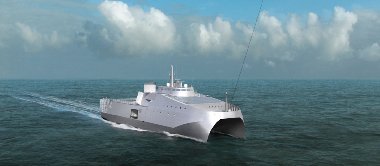Atchoarena, Mikela (2020) PFE - Projet de fin d'études, ENSTA.
Fichier(s) associé(s) à ce document :
| PDF 17Mb |
Résumé
Since it holds an important role in the ocean's biological activity and the climatic system of the Bay of Biscay (BoB), the description of the Ocean Mixed Layer (OML) dynamics is a valuable feature. \\ In this study, different methods of determination of the Ocean Mixed Layer Depth (MLD) are selected and compared. \\ On the one hand, several classical methods based on hydrography are applied to an oceanic mooring high temporal resolution time-series of temperatures and salinity, and one reference classical method is selected and is applied to data collected during annual surveys and to data from a glider campaign. \\ On the other hand, a Slab model method developed by Kokkini et al., 2015, in the University of the Aegean of Greece is tested and adjusted to the southeastern Bay of Biscay (SE). This method exploits wind-speed measurements and surface current data provided by a two-site High Frequency Radar (HFR) system that works operationally since 2009, providing hourly surface currents with 5km spatial resolution and radial coverage lying close to 180km from the coast. \\ The MLD estimates from the reference classical method on the moorings' hydrographical profiles highlight the intraseasonal and the interannual variability of the OML. In short, the OML progress from a Well Mixed Period (WMP) during winter -from November to February- to a Stratified Period (SP) during summer -from June to September- going through transitional phases during autumn and spring. The MLD ranges typically from 10m to 40m during the SP and from 80m to almost 200m during the WMP in the Donostia (DN) buoy mooring. Interannual variability has nonetheless been observed between seasons and the influence of three major meteorological parameters is studied. These results are also used as a reference for the Slab model method validation. \\ Even though the application of the method is at an early stage, the Slab model method is very promising. After a significant work has been carried out to parameterize the method, the first results are in good agreement with the reference classical method MLDs in the DN mooring and shows good temporal evolution. Furthermore, the great potential of the Slab model method is the knowledge of the hourly MLD over the whole spatial coverage of the HFR: the spatial distribution and variation of the MLD can be known throughout the year. The latter shows a satisfactory pattern with clear sequences between WMP and SP. The influence of the bathymetry over the MLD is also observed. Indeed, shallow MLDs all along the coast and deeper MLDs offshore, after the slope, are observed while deep coastal patterns appear close to the French coast during the WMP. \\ Nevertheless, the very low range of depths for the Slab model method is the major problem that needs to be resolved and several improvements are suggested. \\
| Type de document: | Rapport ou mémoire (PFE - Projet de fin d'études) |
|---|---|
| Sujets: | Mathématiques et leurs applications Sciences de la terre et génie de l'environnement Mécanique des fluides et énergétique |
| Code ID : | 8249 |
| Déposé par : | Mikela Atchoarena |
| Déposé le : | 09 déc. 2020 16:23 |
| Dernière modification: | 09 déc. 2020 16:23 |








